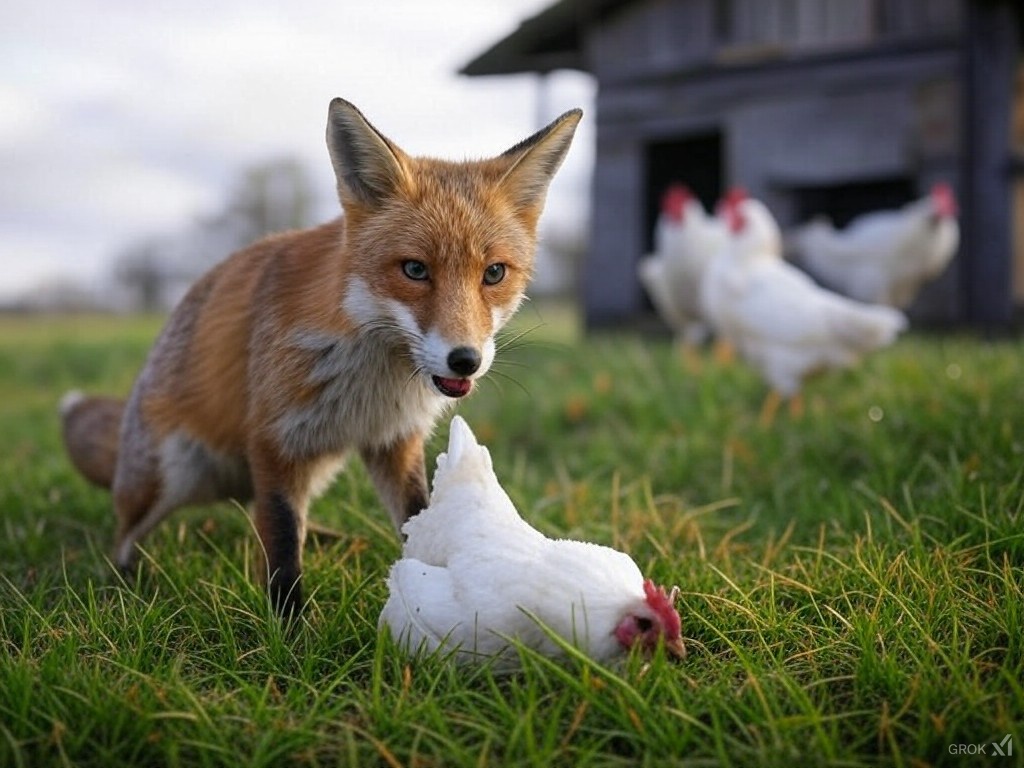Foxes, coyotes and bobcats can cause various issues when they live near residential areas. In some cases, fox and bobcat can be caught in cage traps. Coyotes won’t go in cage traps. With these large animals, foothold traps or firearms are the only options for removal, along with habitat modification and long-term measures.

Here’s a breakdown of the potential problems:
Direct Damage and Nuisance:
- Predation on Pets and Livestock:
- Pets: Small pets like cats and small dogs are at risk, especially if left outdoors. Even larger dogs might be attacked if the coyote or fox feels threatened or is protecting its young.
- Chickens and Other Livestock: Foxes, bobcats and coyotes are known for raiding chicken coops, killing not just for food but sometimes for sport, leading to significant losses for homeowners with poultry or other small farm animals.
- Garden and Property Damage:
- Gardens: They might dig in gardens looking for insects, grubs, or to bury food, damaging plants in the process.
- Yards: Coyotes and foxes can create dens under decks, sheds, or other structures, leading to potential structural damage.
- Trash and Compost:
- They can disrupt trash cans or compost piles, scattering waste which can be messy and attract other pests.
Health and Safety Concerns:
- Disease Transmission:
- Rabies: Both can carry rabies, posing a public health risk if there’s direct contact.
- Other Diseases: They can also carry mange, distemper, and various parasites like fleas and ticks, which can transfer to pets or humans.
- Safety Risks:
- Although generally shy, they can become bolder in urban settings, potentially leading to encounters with humans, especially if they’re protecting their young or feel cornered.
Noise and Disturbance:
- Vocalizations:
- Coyotes, in particular, can be very vocal at night with howling, yipping, or barking, disturbing residents.
- Activity:
- Nocturnal activities like digging or hunting can create noise, especially if they’re close to windows or under decks.
Environmental Impact:
- Ecosystem Disruption:
- In some cases, an overabundance of these predators can disrupt local wildlife populations, including beneficial species or those already at risk.
- Food Chain Alterations:
- They might compete with or prey upon other local wildlife, potentially skewing the natural balance.
Mitigation Strategies:
- Secure Pets: Keep pets indoors at night or in secure areas.
- Protect Livestock: Use secure coops or pens with buried fencing to deter digging.
- Trash Management: Use animal-proof garbage containers.
- Deterrence: Motion-activated lights, sprinklers, or sounds can deter them, though effectiveness varies.
- Habitat Modification: Remove brush piles or other natural shelters near homes.
- Professional Wildlife Control: For persistent issues, professional help might be needed to trap and relocate these animals.
- Education: Public awareness about not feeding wildlife can reduce human-wildlife conflicts.
While foxes and coyotes play important roles in ecosystems by controlling rodent populations and more, their presence near human dwellings can lead to conflicts. Managing these interactions often involves a balance between coexistence and taking steps to protect property and pets. Remember, local laws might protect these animals, so any control measures should be legal.
